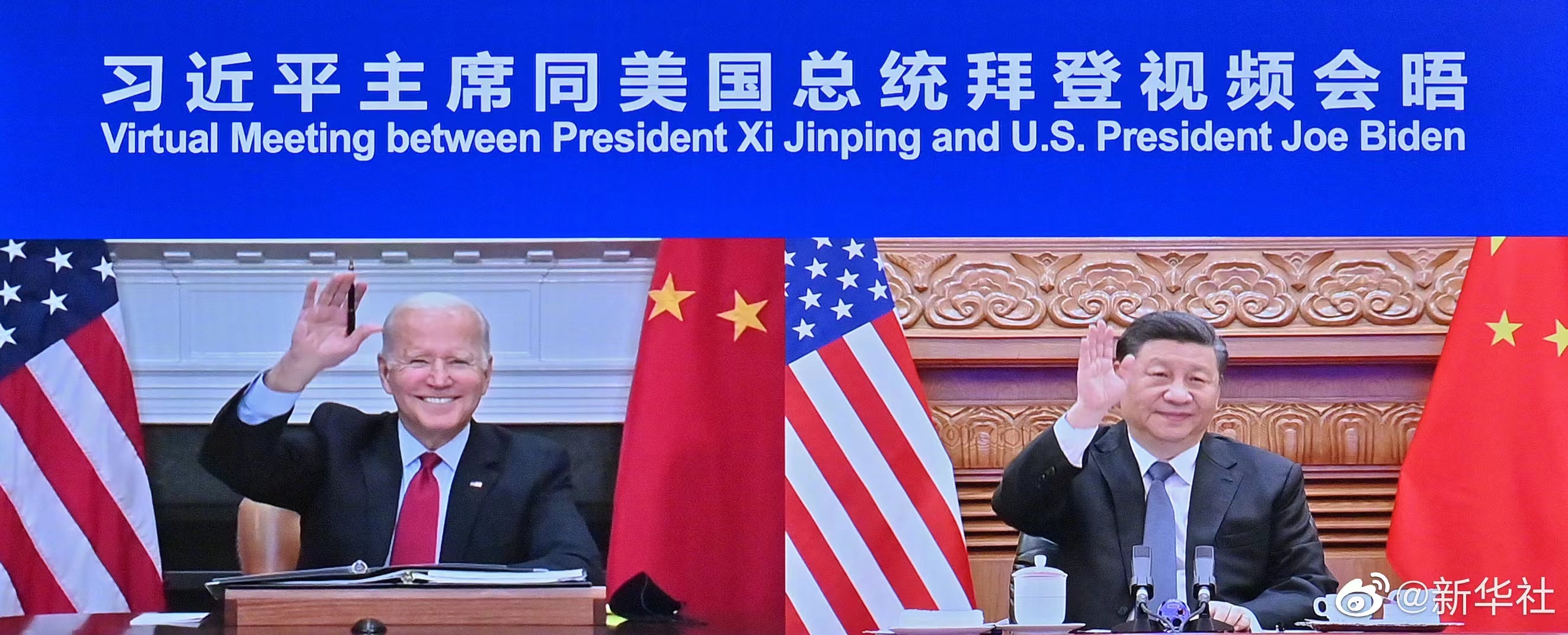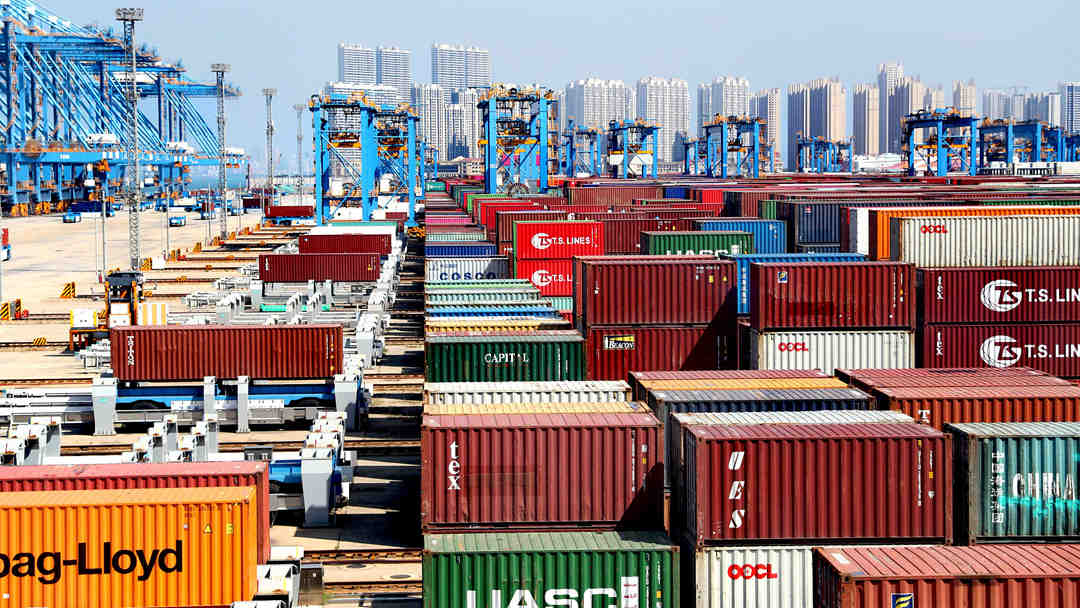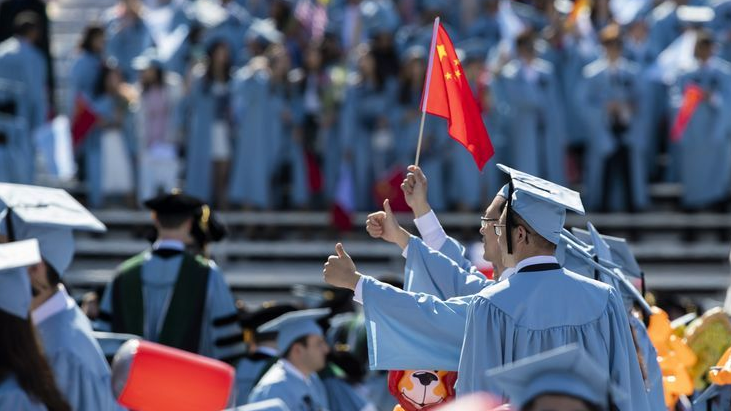(Editor's Note: In the wake of the first virtual meeting between Chinese President Xi Jinping and U.S. President Joe Biden, political science professor Sun Taiyi argues that the two countries are seeking to increase stability and reduce risk in the bilateral relationship. Sun identifies clear trends in the Biden administration's approach to China, notably strong public remarks tailored for a domestic audience followed by reassurance in private talks with Chinese counterparts. He believes that while it is not yet time to be overly optimistic about future ties, the meeting is an encouraging sign. The article reflects the author's views and not necessarily those of CGTN.)
The virtual meeting between Chinese President Xi Jinping and U.S. President Joe Biden was timely, necessary and important.
The relationship between the world's two largest economies has deteriorated in the past several years, exacerbated by the COVID-19 pandemic. Tensions over trade, cyber threats, Taiwan, and value issues related to Xinjiang and Hong Kong have intensified. Observers have hoped that the more experienced and rational Biden administration could adjust courses taken by the Trump administration. Still, the Washington policy circle's China hawks continued preventing the White House from showing any sign of softness towards Beijing.
Against such a backdrop, the virtual meeting between the two countries' top leaders showed a rare sign of reconciliation and goodwill. The peoples of the two countries have suffered from the worsening of the bilateral relations, and the virtual meeting indicated that both sides were seeking stability with the intention to reduce the risk of conflicts and miscalculations, and both were giving pragmatism a chance.

Chinese President Xi Jinping has a virtual meeting with U.S. President Joe Biden in Beijing, China, November 16, 2021. /Xinhua
Chinese President Xi Jinping has a virtual meeting with U.S. President Joe Biden in Beijing, China, November 16, 2021. /Xinhua
Biden's balancing act
The Biden administration's China strategy is still taking shape, but some tactics have emerged since Biden came to office. The first tactic is "strategic delay." Since many China-related issues are complex and face pressures from multiple stakeholders, it is politically expedient to delay a meaningful, clear-cut decision, and ask experts and federal agencies to continue their investigation and assessment.
This has been true on multiple issues, including trade, defense, supply chain and COVID-19. Of course, Democrats' fear of losing at least one chamber in Congress during the midterm election in 2022 also created urgency for the Biden administration to prioritize domestic legislative agendas and put some of the controversial and consequential China-related policy decisions on the back burner.
Following the same logic, whenever there is a need to make a tough move against China, the U.S. also is careful not to escalate the tension. Thus, when the Biden administration ordered U.S. intelligence officials to "redouble" their efforts to investigate the origins of the COVID-19 pandemic, when the U.S. expanded blacklists of Chinese companies, and when the U.S. intended to discuss a so-called trade deal with Taiwan authorities, high-level officials including Katherine Tai, Gina Raimondo and Janet Yellen held phone calls with their Chinese counterparts such as Liu He and Wang Wentao.
The tough actions were catered towards the domestic audience, while the engagements via phone calls attempted to reassure China the U.S. was not seeking an escalation of conflicts. Of course, we could also anticipate reconciliatory policies accompanied by harsh words or limited tougher policies. For example, due to the pressure from many U.S. businesses, U.S. Trade Representative Katherine Tai announced the start of a targeted tariff exclusion process while there were reports that U.S. National Security Advisor Jake Sullivan might be pushing for the increase of tariffs on some key Chinese industries like steel and solar panels at the same time.

The Port of Qingdao, east China's Shandong Province. /CFP
The Port of Qingdao, east China's Shandong Province. /CFP
Motives for re-engagement
Many factors could influence such balancing acts and tip the scales one way or another. The more positive and practical signals in the bilateral relationship could be due to Biden's economic challenges (especially the signs of inflation) and political troubles (including election results from Virginia and New Jersey recently, and the uncertain outlook of his "Build Back Better" agenda).
Of course, the Biden administration is worried that any miscalculations in the Taiwan Straits could trigger a hot war with Beijing that the U.S. could not afford to fight at this moment. Biden also believes that efforts to ease tension at lower levels have largely failed, and he has concluded that the only way to solve major problems and maintain stability with China is to speak to the top Chinese leader directly, even if virtually.
The Biden administration has already taken actions, albeit quietly, regarding the two lists the Chinese officials presented to the U.S. Deputy Secretary of State Wendy Sherman in Tianjin – notably on the case of Meng Wanzhou. The U.S. is also ready to loosen visa restrictions on Chinese students and potentially Chinese journalists depending on the reciprocal offer from China. There are also chances for the U.S. and China to informally resolve some other disputes (including the reopening of closed consulates).
The recent momentum generated by the climate talks between the two delegations is also a welcoming sign. During the virtual meeting, Biden referring to the old times when the two spent time face-to-face together traveling through China and Xi referring to Biden as "my old friend" also indicated a somewhat cordial personal relationship between the two leaders. However, there are still important issues that are politically unrealistic for Biden to compromise on at the moment. For the bilateral relationship to rebound, there is still a long way to go.

Graduate students from China pose for photos before the Columbia University commencement ceremony in New York, the United States, May 22, 2019. /Xinhua
Graduate students from China pose for photos before the Columbia University commencement ceremony in New York, the United States, May 22, 2019. /Xinhua
The world expects
At this critical juncture, the world is counting on China and the U.S. to not only work with each other but also show leadership in tackling global challenges. The virtual meeting itself was an important signal that both sides are cautiously seeking a stable and constructive relationship while avoiding competition veering into conflicts. The U.S. and China have shared interests in combating climate change, ending the COVID-19 pandemic, preventing the proliferation of weapons of mass destruction, facilitating trade and prosperity, and maintaining peace and stability in the Indo-Pacific. One should not be overly optimistic of the outcome from just one virtual meeting, but both China and the U.S. have at least arrived at a new crossroad. Whether the journey will be traveled together or the two sides will part ways is yet to be seen.
(Dr Sun Taiyi is currently an assistant professor of political science at Christopher Newport University, U.S. He is also the executive editor of the Global Forum of Chinese Political Scientists' main publication Global China.)

